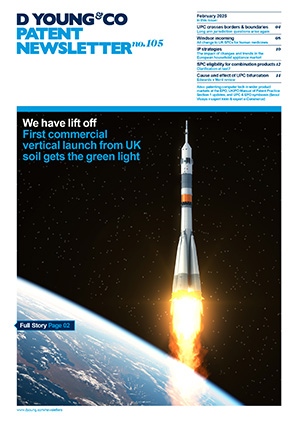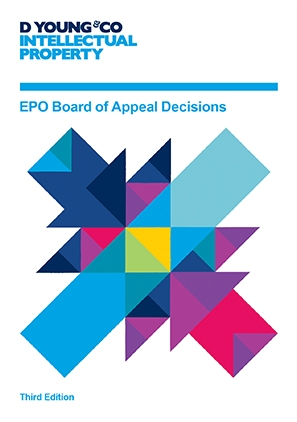5G: unlocking innovation with ultra-reliable low-latency communication
As its name suggests, the fifth generation (5G) of telecommunications standards for broadband cellular networks represents an enhancement over fourth generation (4G) long term evolution (LTE). However, this enhancement goes beyond the faster speeds and increased reliability we have come to expect from successive generations of those standards.
5G as a standard is directed at supporting more targeted services, such as ultra-reliable low-latency communication (URLLC) services, which attempt to simultaneously achieve high reliability and low latency communication - two almost conflicting requirements, which present a particularly formidable problem.
While this service is not aimed at providing increased bandwidth with yet faster web browsing, it does promise significant developments in many exciting fields of technology including remote-controlled surgery, self-driving cars and industry automation.
Why do we need high reliability and low latency?
URLLC is envisaged to provide a range of mission-critical applications where latency and reliability requirements cannot be compromised.
Suppose a surgeon uses a device to transmit instructions to a robotic arm for performing a surgery remotely. Although it is imperative that the surgeon’s instructions are received/processed by the robotic arm as quickly as possible (low latency), it is equally important that those instructions are received and processed successfully (high reliability). As surgical procedures are potentially life threatening, the demand on latency and reliability is very high and exceptional performance in respect of both requirements must be guaranteed.
Beyond this, the applications of URLLC are expected to extend to vehicle automation where rapid and reliable communication between a vehicle and a 5G network enable the vehicle to control itself in response to information regarding nearby traffic accidents, other vehicles or weather conditions. Furthermore, it is not surprising that the greater control provided by URLLC is expected to provide improved safety in industrial automation
Conflicting requirements
So, what do low latency and high reliability actually mean? And why is it so difficult to reconcile these requirements?
Latency (specifically, end-to-end latency) is effectively a measure of the delay of a data packet between a source and a target. It includes delays in transmitting the packet over the air, in queuing of the data packet, and any processing delays/re-transmissions of the data packet if required. Reliability is defined as the probability that a data packet of a given size is successfully transferred within a given time period.
With 4G, latency is currently around 4 ms. However, 5G URLLC has a latency target of 1 ms and 99.999% reliability.
As measures taken to improve latency typically result in a decreased reliability and vice versa, achieving both aims simultaneously is not a trivial task.
A new design
Among the most innovative solutions is the development of pre-emptive scheduling. An entity in the radio access network known as the gNB, which forms a radio communications cell of a 5G wireless communications system, arranges for data transmission on various connections with communications devices within the cell by “scheduling” data for each service and each connection via resources of a wireless access interface formed by the gNB. Clearly, this scheduling requires some fair distribution of these resources, which naturally takes some time. However, to meet the low-latency requirements a service supported by URLLC cannot wait for the scheduler to allocate resources of the wireless access interface with all the other services.
This is best explained by way of example: assume a transmission is scheduled from a gNB to a user equipment (UE) such as a smartphone on all available radio resources with a long transmission time interval (TTI) (downlink transmission). The gNB may subsequently detect that URLLC data is to be transmitted and, in order to satisfy the low-latency requirements of URLLC, the URLLC data must be sent as soon as possible. To achieve the low latency the gNB allows the URLLC to pre-empt or effectively queue jump to usurp communications resources which may have been previously allocated by the gNB to another service. Pre-emptive scheduling allows the gNB to overwrite a part of the ongoing transmission with the urgent URLLC data, drastically decreasing the latency for the URLLC data. Clearly, the trade-off here is that the part of the original transmission which was overwritten is lost. However, the gNB may transmit a pre-emption indicator (PI) to the UE, informing it of which part of the transmission was affected so that the UE takes account of this during decoding.
Similarly, for URLLC transmissions from the UE to the gNB (uplink transmission), a similar pause-resume scheme exists in which the URLLC data can take radio resources which the gNB had already allocated to a different device.
Other means of reducing latency include grant-free uplink in which a UE can transmit URLLC data to a gNB without first requesting radio resources. Additionally, the introduction of new radio (NR) numerology in 5G has created the possibility of mini-slot based scheduling. Previously, transmissions could only be scheduled in “slots” which last 14 OFDM symbols. Mini-slot based scheduling allows URLLC transmissions to start on any OFDM symbol and only last as many symbols as is required for the communication.
What about reliability? Reliability is largely dependent on the quality of the radio link between the UE and gNB. The signal to interference plus noise ratio (SINR) is typically used as a measure of the reliability of a radio link. A high SINR means a high reliability and vice versa. Accordingly, measures which enhance signal power and/or mitigate the effects of interference increase reliability.
To meet the stringent reliability requirements of URLLC, the SINR can be further increased by implementing multiple antennas at the transmitter and/or receiver (this is known as “micro-diversity”). Currently, the preferred mode for maximising diversity (and therefore reliability) is the “single-user single-stream” mode in which multiple antennas on a transmitting device are used to transmit multiple data streams to the same end-point.
Furthermore, reliability may be increased using pro-active repetition schemes. For example, a scheme known as “K repetitions” allows a UE to obtain “K” times the resources required for a transmissions so that if no acknowledgement is received for a particular transmission, the UE can transmit the data packet again (up to K times).
Conclusion
The next generation of telecommunications standards for broadband cellular networks promises much more than faster download speeds for web browsing or reduced buffering delays when streaming video. 5G URLLC services are aimed towards, and tackle head on, some of the riskiest and most rewarding areas of automation for replacing wired with wireless connectivity.
While we may still be some distance away from a complete automation of surgeries, vehicles and industry robots, the significant advancements pioneered by 5G URLLC services in simultaneously improving reliability and latency bring it closer to realisation.



